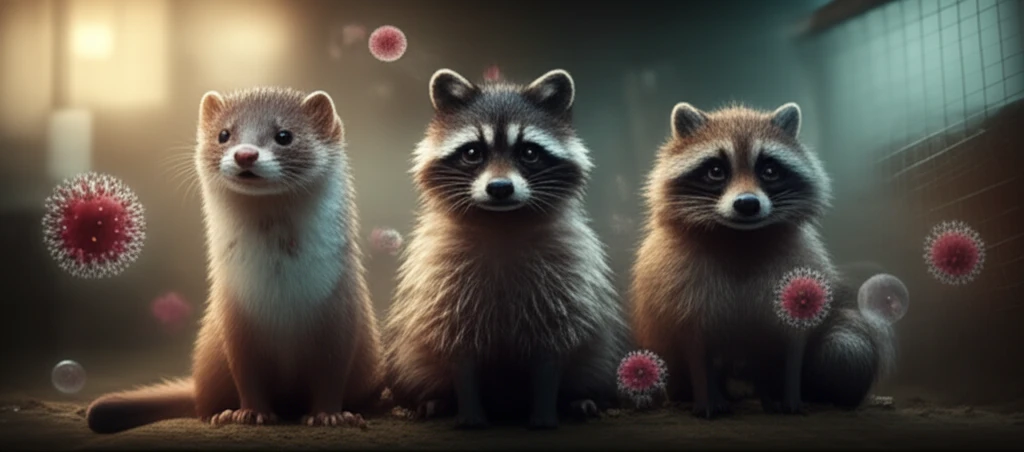
Mink Circovirus: A Threat to Fur Farms?
"New Research Reveals the Virus Can Infect Minks, Foxes, and Raccoon Dogs, Raising Concerns for Animal Health and the Fur Industry."
Mink circovirus (MiCV), a member of the Circoviridae family, was initially identified in minks in China back in 2013. The virus, characterized by its single-stranded circular genome, has raised concerns within the fur farming industry due to its potential impact on animal health and farm productivity.
A new study sheds light on the virus's broader impact, revealing that MiCV isn't limited to minks alone. Researchers have discovered that foxes and raccoon dogs, also important fur-bearing animals, can be infected with the virus. This finding expands the scope of concern and necessitates a re-evaluation of biosecurity measures on fur farms.
This article will explore the implications of this discovery, examining the symptoms of MiCV infection in different animals, the potential for co-infection with other pathogens, and the overall impact on the fur farming industry. Understanding these dynamics is crucial for developing effective strategies to mitigate the spread and impact of MiCV.
MiCV: A Multi-Species Threat

The research highlights that MiCV can infect minks, foxes, and raccoon dogs, with infection rates alarmingly high on certain fur farms in China. The study involved collecting samples from diseased animals across several provinces and analyzing them for the presence of MiCV.
- MiCV was detected in a high percentage of samples from minks, foxes, and raccoon dogs displaying symptoms of disease.
- The virus was found in the liver, digestive tract, and fecal specimens of infected animals, aligning with previous findings in minks.
- Clinical signs observed in infected animals included lethargy, anorexia, diarrhea, growth retardation, and low body weight.
- Histological results revealed enlarged mesenteric lymph nodes and visceral hemorrhages in the diseased animals.
Implications and the Future of MiCV Research
The discovery that MiCV can infect foxes and raccoon dogs significantly broadens the scope of concern for fur farms. The high infection rates observed in the study highlight the need for improved biosecurity measures to prevent the spread of the virus.
Furthermore, the study's findings suggest the potential for MiCV to interact with other pathogens, leading to more severe disease outcomes. Concurrent infections of MiCV with E. coli and MEV were observed, indicating a complex interplay between different infectious agents.
Further research is needed to fully understand the pathogenesis of MiCV infection in different animal species and to develop effective strategies for prevention and control. Understanding whether coinfection of MiCV occurs with pathogens other than E. coli and MEV needs further investigation. This includes exploring the potential for vaccine development and the implementation of strict biosecurity protocols to protect the health and welfare of animals on fur farms.
